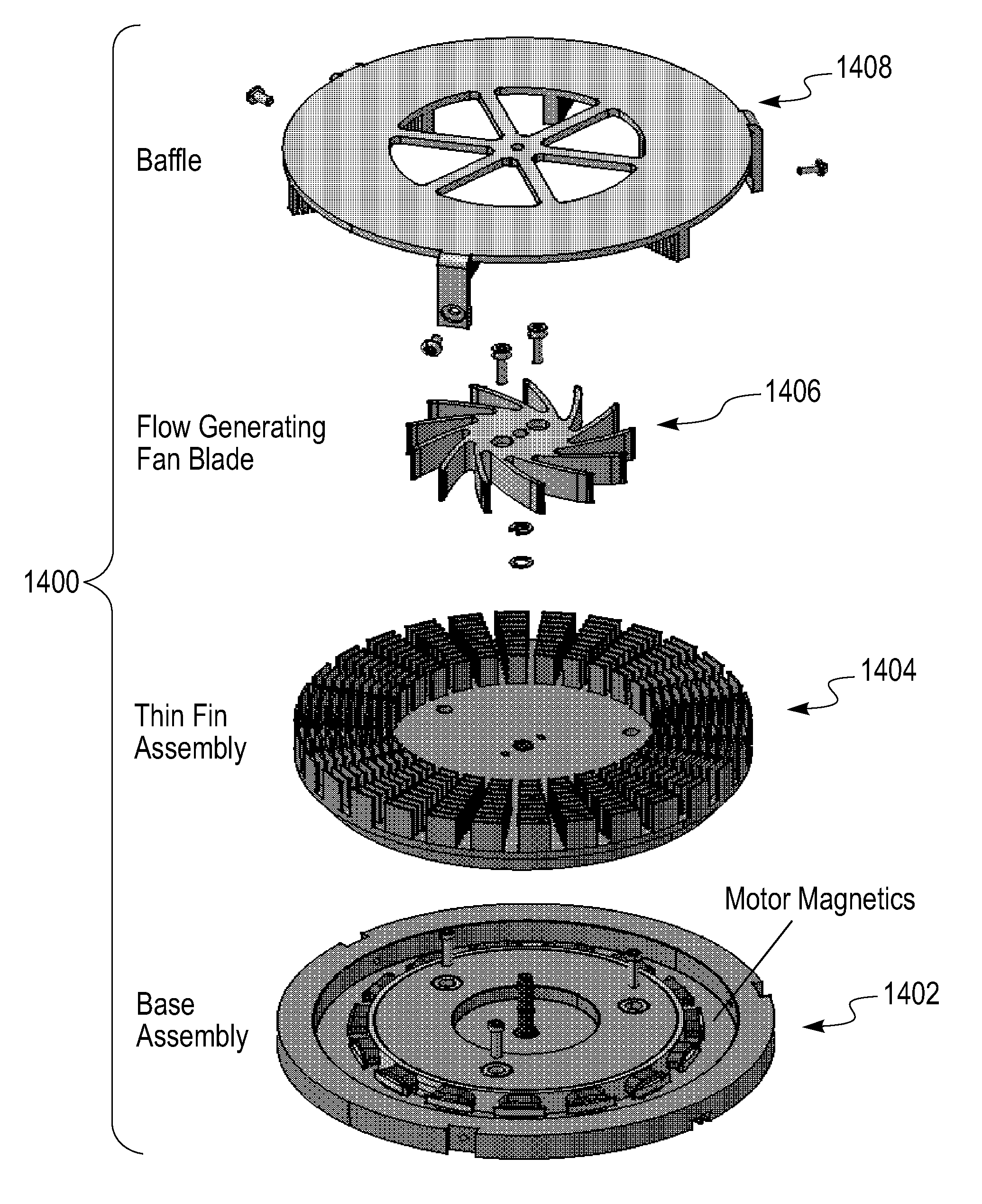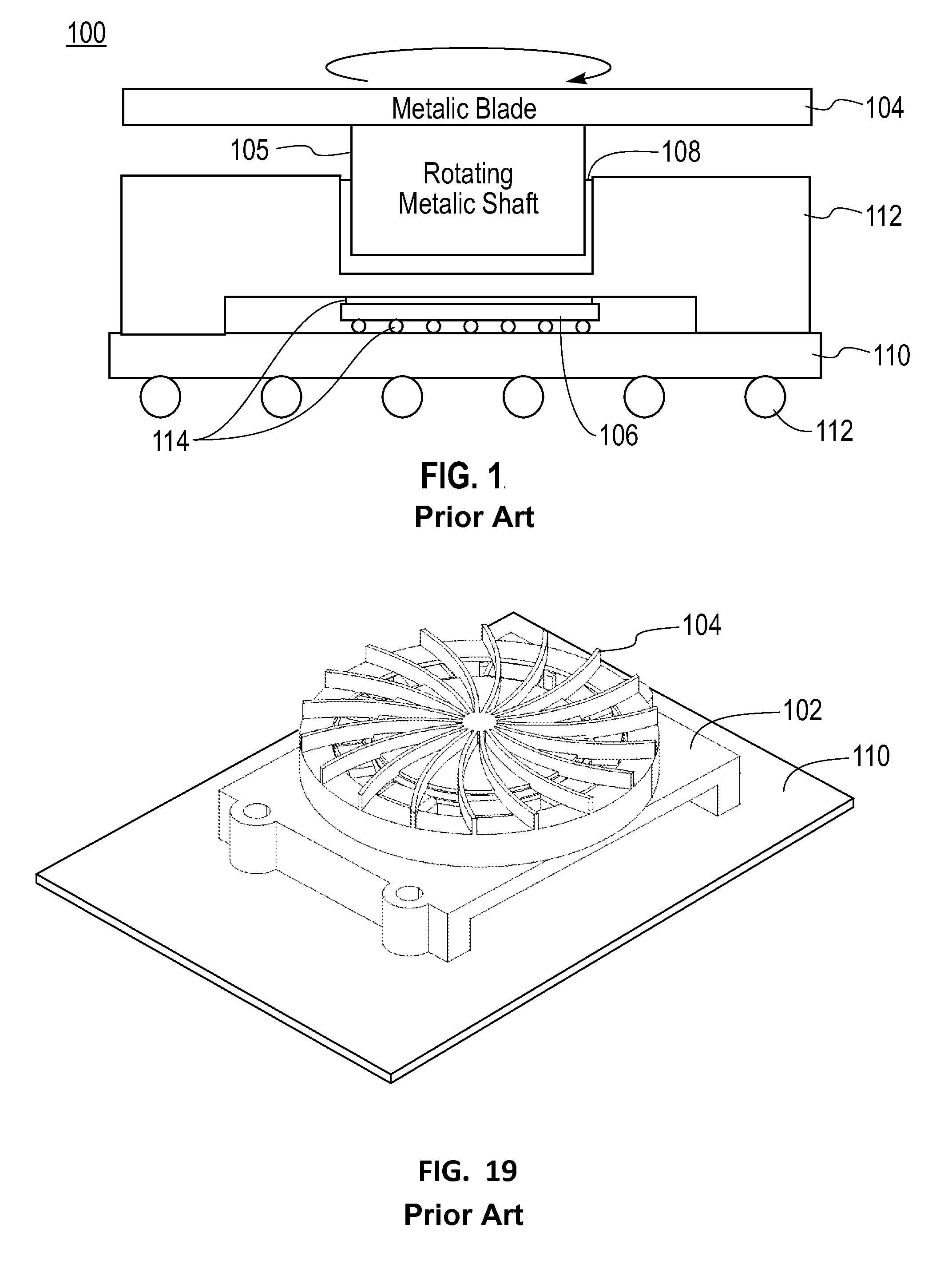Heat transfer device in a rotating structure
a technology of rotating structure and heat transfer device, which is applied in the direction of insulated conductors, cables, power cables, etc., can solve the problems of insufficient straight construction to ensure efficient heat transfer apparatus, limited in reducing thermal resistance, and inefficient conductivity of heat generated by chip 106/b>
- Summary
- Abstract
- Description
- Claims
- Application Information
AI Technical Summary
Benefits of technology
Problems solved by technology
Method used
Image
Examples
Embodiment Construction
[0032]Fluid flow velocity through a rotating blade system can be decomposed into radial and tangential components. An embodiment leverages the tangential velocity component to maximize the film heat transfer coefficient. According to this embodiment, a blade structure consists of a metallic disc on which a multitude of fins or pins are distributed along concentric circles. The cross-section of the fins are optimized for maximum surface to footprint area (i.e., the area of the disk occupied by the blade). A pin with circular cross-section radius r makes the film heat transfer coefficient insensitive to airflow direction but an ultra small r could make the device mechanically weak. A thin near-rectangular (or arc-shaped) cross-sectioned fin allows large surface area for heat transfer feasible while maintaining its mechanical strength. But its geometry renders h to become sensitive to air-flow direction. The system takes advantage of the tangential velocity of a moving rotor system wit...
PUM
| Property | Measurement | Unit |
|---|---|---|
| heat transfer coefficient | aaaaa | aaaaa |
| temperature | aaaaa | aaaaa |
| radius | aaaaa | aaaaa |
Abstract
Description
Claims
Application Information
 Login to View More
Login to View More - R&D
- Intellectual Property
- Life Sciences
- Materials
- Tech Scout
- Unparalleled Data Quality
- Higher Quality Content
- 60% Fewer Hallucinations
Browse by: Latest US Patents, China's latest patents, Technical Efficacy Thesaurus, Application Domain, Technology Topic, Popular Technical Reports.
© 2025 PatSnap. All rights reserved.Legal|Privacy policy|Modern Slavery Act Transparency Statement|Sitemap|About US| Contact US: help@patsnap.com



